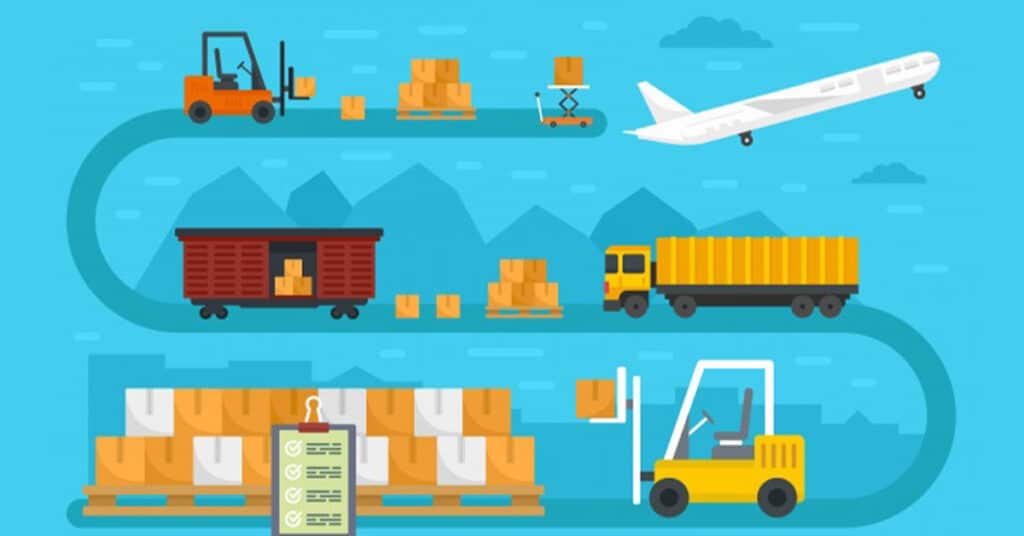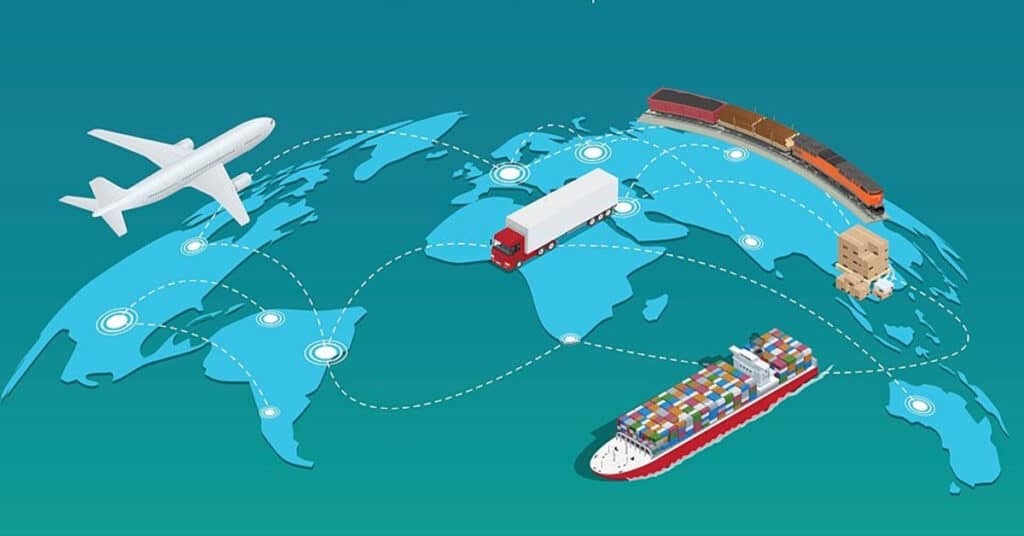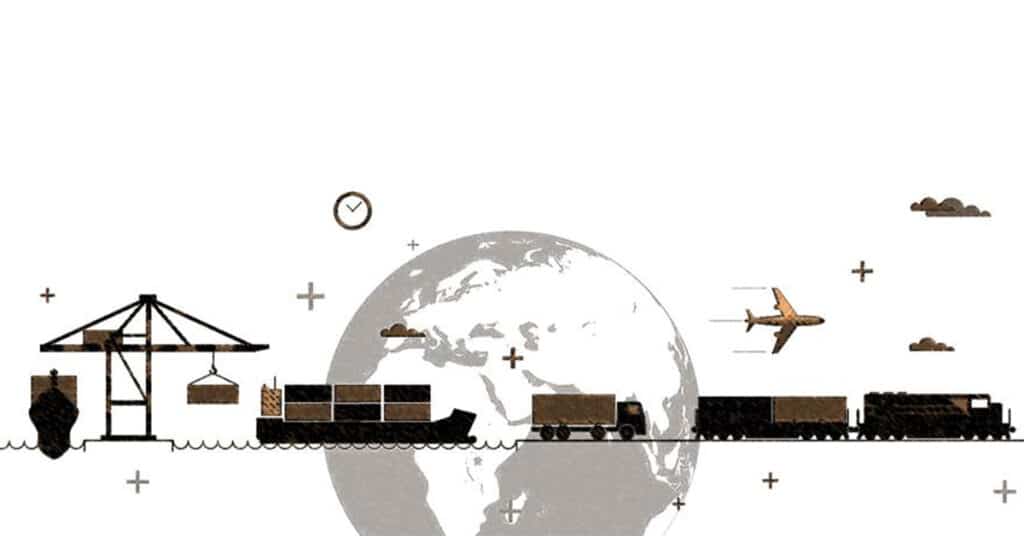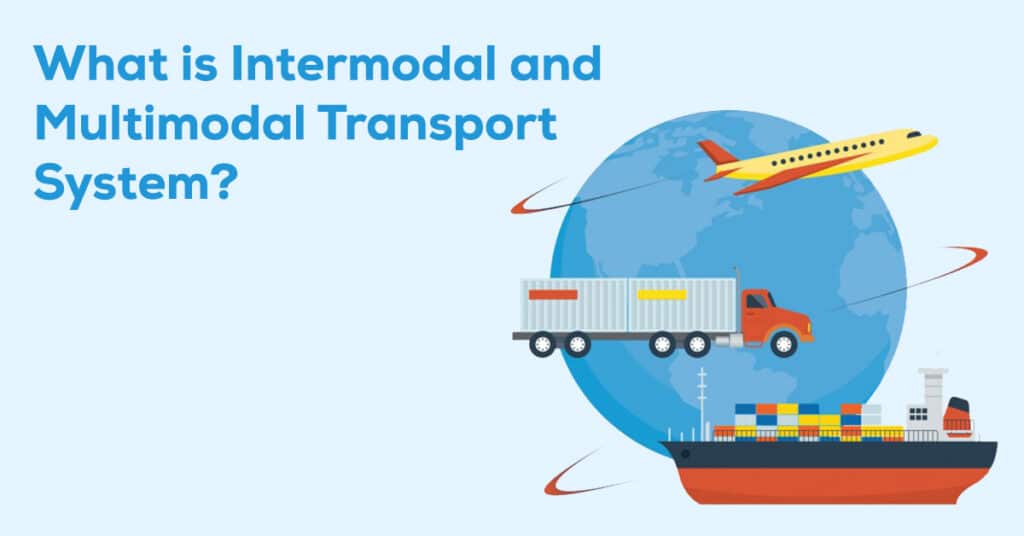What is the Intermodal and Multimodal Transport System?
As a matter of first importance, let’s look at what the transport system is all about. The transport system shall be assistance involving the assets and offices needed for the transportation of travelers or products.
This transport system is now divided into two groups-
- Intermodal transport system
- Multimodal transport system
Let us delve into the specifics of what the intermodal and multimodal transport systems are:
INTERMODAL TRANSPORT SYSTEM
Intermodal transport is the transportation of products in an equivalent unit or truck for progressive use of two or more methods of transport where the items are not overseen during the switchover from one type of transport to the next.

Benefits of Intermodal Transport System
Higher expense
A supplier who does not need to use an entire container can opt for intermodal transport because it allows for the combination of full loading and bulk systems. The use of loading units further decreases the handling of goods, which requires decreased labor during shipping, facilitates the trans-shipment and movement of ILUs from one means to another, and avoids the separation of goods (breaking load).
Higher Defense
Some possible risk is minimised by the fact that the objects are in a sealed cabin, which is only opened at the point of destination. Authoritative cycles, controls and customs permits are smoothed out by repairing the Intermodal Loading Unit, saving time to stop and drive, and increasing shipping times.
Environmental advantages
Savings in the processing and packing of products, a decrease in the electricity consumption per loading unit, with a reduction in the CO2 emissions of the means of transport/carriers used, mean a reduction in the carbon footprint of transport.
MULTIMODAL TRANSPORT SYSTEM
Intermodal transport is a single form of multimodal transport. The difference between the two systems is that the first includes issuing a transport document for each mode of transport used (truck, train, etc.) while only one document is issued in the second instance. However, although each mode of transport used in the intermodal system requires the issuing of its respective records, the paperwork is unified for all of them.
The multimodal transport mechanism is of the same nature as the transport method. However, this system is more commonly used in freight transport than in public transport. However, each transport service company has the same bill of lading or deal. The liability of the goods from origin to the end user lies with a single carrier firm. Under this definition, all modes of transport should be given to the service provider. Upon receipt of a project or contract, the service provider will create a mixture of different transport depending on the path of the customer and the form of goods.

It has the same uses as intermodal transport. When handling people with multimodal transport (mixed-mode commuting), the scheme seeks to reduce the reliance on personal vehicles during commutation, making it possible for public transport to prepare for any trip. With aid of multimodal transport systems, coordinated mass transport can be made possible by connecting many modes of public transport, such as bus, light rail, and metro. Such mass transit will lead to the development of integrated urban mobility.
Both transport networks include movers and packers services. Movers and packers are a group who help you make a trip from one place to the next in your home. Since in-house or workplace transfers, the owners usually won’t have the ability to track migration properly, these movers and packers will help you load any one of your items with care so they won’t get hurt.
What is the Difference between Intermodal and Multimodal Transportation?
Contracts
Intermodal transport views each mode of transport as a separate contract. In the other hand, multimodal transport achieves a higher performance, as the whole operation is tracked by a single carrier radar. Thus, under intermodal, the burden of the commodity or container changes from one side to the other, making it impossible to retain tight quality control. Multimodal, on the other hand, has the benefit of having freight under control. The development of a single ticketing system is more available by multimodal transport. Passengers do, however, take care of individual sales of fares at each point of travel.
Flexibility:
Intermodal transport facilitates a customer or carrier provider to select the best of each mode of transport. For example, the quickest ferry service may be preferred to save hours in transit and convenient road travel over public transport. In multimodal transport, the option or model made open to the contractor or the customer is based on the model of the service provider.
Delays and Overhead
In terms of overhead and error, the contractor can keep track of all problems and difficulties in each mode of transport. For example, if a person moves from the airport to a distant location, he or she must take into account the delay in arriving by rail, balance it with public road transport, and so on. One mode of transport will not provide full details on problems and disruptions in another mode of transport, which contributes to incoherence of intermodal transport. However, as far as multimodal is concerned, the whole operation is under the management of one service supplier, which gives the contractor or service customer comfort.

Costs
Intermodal transport operates with a different contract for each mode of transport, which raises the total cost of transport for the provider or travelers. In the case of multimodal transport, the operational cost of setting up such a facility is high, but the total package for the customer will be cost-effective than intermodal transport. Multimodal transport has greater route performance than intermodal transport.
Control of the Government
In the case of both origin and destination situated in the same region, there is no substantial distinction between intermodal and multimodal transport regulations. Let’s assume if both points (origin and destination) are on opposite continents, the shipping firm needs to draw up a deal that covers the laws of both governments.
When dealing with international travel, the laws ratified by each country on the mechanism are different. This disparity increases the difficulty of the multimodal transport contract. Any countries do not have the infrastructure to incorporate multimodal transport.
Reliability:
At each point, the carrier enters into a stacking contract which, on account of multi-purpose transport, transfers the responsibility of the freight or transport to the following aid provider. The process would also become intricate and entangled in the arrangement of terms and conditions during the loading of candidates. Case methodology can vary based on the form of bill of replenishment provided by each professional co-op. The situation with the applicant can vary depending on the authoritative terms and arrangements. On the basis of multimodal transport, one transaction is authentic and the expert entity is responsible for any antagonistic event.
Insurance
In the case of multimodal travel, all modes of transport are protected by a single umbrella insurance. Intermodal transport raises the total cost of service by providing different forms of insurance on each contract. However, this person insurance can offer improved travel protection and protection for those shipping delicate or perishable goods. The ultimate insurance definition is very valid in the option of multimodal public transport for the region or city.
Speed vs. Cost
Multimodal transportation and the intermodal transport are also efficient in terms of speed and value relative to traditional trucking logistics. However, in an in-depth study of intermodal and multimodal principles, multimodal travel is optimal if passengers place greater focus on speed than transport costs. This is why multimodal transport is the perfect solution to the public transport scheme. As far as intermodal transport is concerned, it is cost-effective, but the pressure and uncertainty of intermodal transport and the development of a mixture of modes of transport are at the head of the traveler, which can become a challenging task if used on a regular basis.
Wrapping Up
Despite the benefits and reach of intermodal and multimodal transport, it is obvious that one is not a complete substitute of another. For any thriving urban city, both intermodal and multimodal networks are important if you are searching for more effective transport without forgoing a green initiative for a healthier future.

